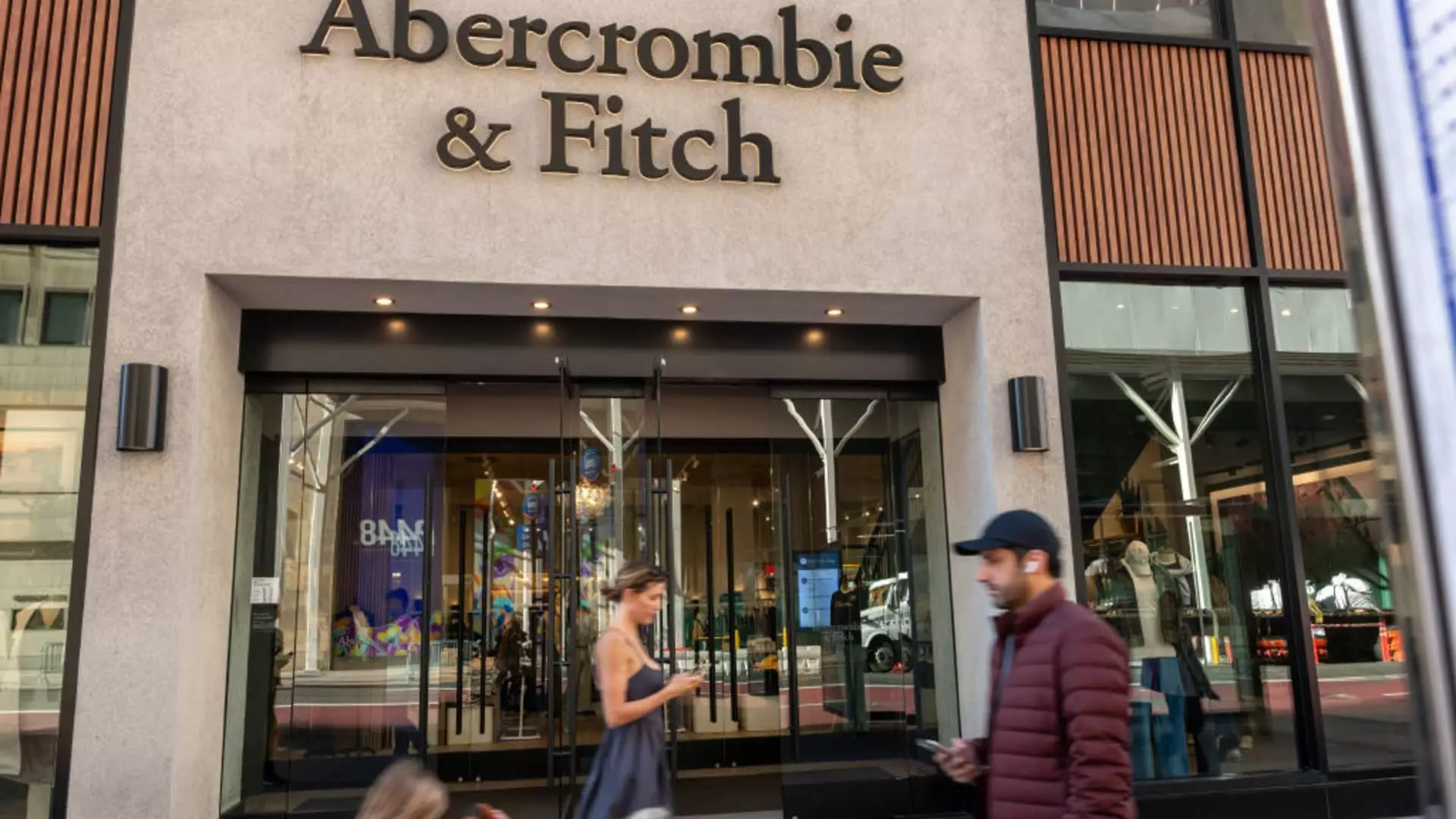Abercrombie & Fitch has demonstrated remarkable resilience in the face of challenges and controversies, particularly in light of the recent events surrounding its former CEO, Mike Jeffries. Despite his arrest on serious charges, the apparel retailer has posted impressive financial results, continuing its streak of double-digit sales growth for six consecutive quarters. This article explores the company’s current performance, strategic moves, and outlook as it navigates a competitive retail landscape.
In its fiscal third quarter, Abercrombie & Fitch exceeded Wall Street’s expectations, showcasing an earnings per share of $2.50 compared to the anticipated $2.39. With revenues hitting $1.21 billion, surpassing the expected $1.19 billion, the company reported a striking 14% increase from the prior year. This level of consistent financial performance underscores the brand’s ability to captivate its target demographics, particularly as it prepares for the crucial holiday shopping season.
The company’s ability to earn a net income of $131.98 million, a significant improvement from $96.2 million a year earlier, is a testament to its strategic adaptability in a challenging market. The upcoming holiday quarter is projected to see an additional sales growth of 5% to 7%, indicating stronger performance than previously forecasted. Abercrombie’s readiness to exceed the industry’s expectations is commendable, particularly in a retail environment that can fluctuate based on consumer sentiment and external variables.
Under the leadership of CEO Fran Horowitz, Abercrombie & Fitch has successfully repositioned itself within the retail market. Horowitz’s emphasis on a regional playbook has led to impressive growth figures across all geographical segments, with double-digit increases reported across the Americas, Europe, the Middle East, Africa (EMEA), and Asia-Pacific (APAC). Specifically, the APAC region experienced a remarkable 32% growth, reflecting the company’s commitment to international expansion.
Furthermore, Abercrombie has diversified its product offerings, including the introduction of a wedding collection and an innovative partnership with the NFL. Such initiatives not only widen the company’s product range but also reach new customer segments, thereby enhancing brand engagement. Additionally, the Hollister chain targets Gen Z consumers, ensuring that Abercrombie maintains a distinct brand identity catering to millennials while appealing to a younger demographic.
Despite the company’s positive financial outlook, Abercrombie’s stock dipped by about 3% in premarket trading following the announcements. This situation raises questions about market sentiment and investor confidence. Historically, retail performance can be heavily influenced by broader economic trends and consumer sentiment. Interestingly, the market sentiment surrounding Abercrombie has shifted since the recent presidential election, with some analysts predicting improved consumer spending in light of newfound political stability.
As economic conditions evolve, the stark contrast in how retailers view their performance versus the anticipated response from the market is noteworthy. Companies, including Abercrombie, exhibited caution in earlier quarters citing uncertainties, but have adopted a more bullish stance following a perceived positive turn in the political landscape. The merging of these factors indicates a complex interplay impacting investor perceptions that could potentially influence future trading in retail stocks.
While Abercrombie & Fitch has showcased remarkable performance and resilience, it must remain vigilant in the face of emerging challenges. The retail landscape is continually evolving, and consumer preferences can shift with little warning. As holiday sales approach, Abercrombie’s ability to maintain its growth trajectory will be crucial. Preparing for potential disruptions, whether they stem from economic fluctuations or competitive pressures, is vital as the company moves into 2024.
The company’s commitment to leveraging its historical strengths while also exploring new opportunities positions it well for a dynamic retail environment. By fostering both brand loyalty and reaching new demographics, Abercrombie & Fitch aims not just to survive but to thrive in the increasingly competitive apparel market.

